Syzygium aqueum (Burm.f.) Alston
| Etymology | Genus | Jointed (Syzygos), referring to its paired leaves |
|---|---|---|
| Species | Watery, referring to the high water content in the fruit | |
| Family | Myrtaceae | |
| Synonyms | Eugenia aquea Burm.f. | |
| Common Names | Jambu, Jambu Ayer, Water Apple | |
| Status | Exotic: Cultivated Only | |
| Form | Tree | |
| Native Distribution | Bangladesh, Sri Lanka, Myanmar, Indonesia, Malaysia, Papua New Guinea, Australia | |
Diagnostics:
A tree up to 10m, Syzygium aqueum has obovate-elliptic leaves, with distinctive heart-shape base and very short petioles (Corner, 1997). Its fruits are immediately recognisable, bell-shaped and growing in clusters, ripening to a bright red or pink colour.
Interesting Facts:
The Jambu fruits are edible, and commonly available in markets here. It is a low caloric fruit; containing 90% water compared to calories and fats. It is rich in fibres and contains essential nutrients, such as vitamins, minerals, and proteins (Bodhare, 2023).
The Jambu tree is not commonly cultivated likely due to the amount of rotting fruits it produces during the fruiting season. Most of the trees observed in the heartlands are probably planted by residents.
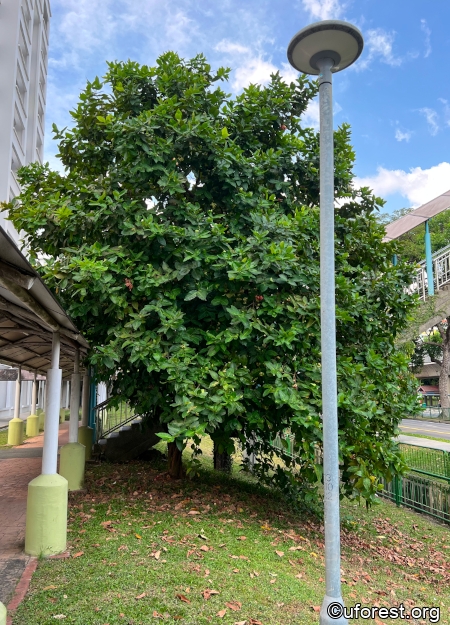
A tree along Yishun Ave 2 (2023).
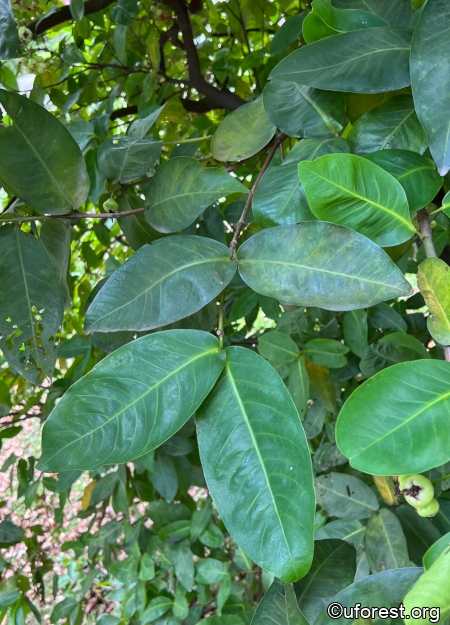
Branch.

Leaf upper surface.

Leaf lower surface.
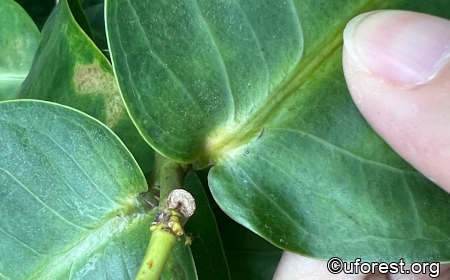
Cordate base.
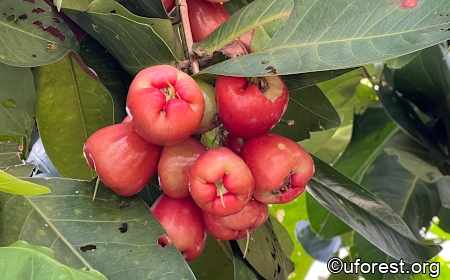
Ripe fruits.
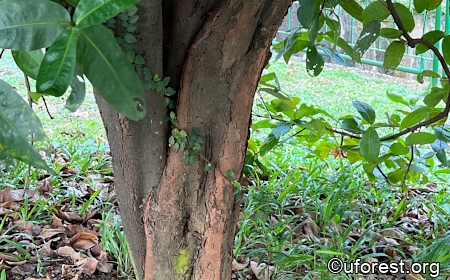
Trunk.
References
Corner EJH. (1997) Wayside Trees of Malaya. Volume 2. 4th edition. The Malaysian Nature Society, Kuala Lumpur. 297 pp.
Bodhare A (2023) Water Apple: Uses, Benefits, Side Effects, And More! PharmEasy. https://pharmeasy.in/blog/ayurveda-uses-benefits-side-effects-of-water-apple/. Accessed on 18-Jun-2023.
Author: Siyang
Posted: 2023-06-17 / Modified: 2023-06-19